Tom Cruise brings back the blockbuster with Top Gun: Maverick
Top Gun: Maverick will take you back to a golden era of big-screen cinema. The cast and crew reveal how they made it.
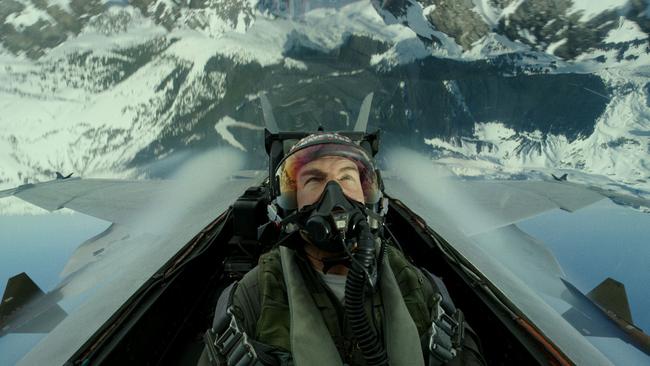
At dusk, a man climbs into the cockpit of a pitch-black futuristic jet plane. An astronaut helmet is fastened upon his shoulders. His goal is to reach mach 10 and become the fastest man on the planet. If you were reading this in 1980, you might recognise the man as Chuck Yeager – the legendary test pilot Tom Wolfe decreed as the most righteous in his seminal book The Right Stuff. But, in 2022, the man isn’t Yeager, it’s Tom Cruise, back in the hot seat as Pete “Maverick” Mitchell for the first time since 1986.
It’s been 36 years since Top Gun premiered and Cruise lit his candle that would burn into a supernova as big as any star we’ve seen. In that time, he’s become a Hollywood version of Yeager – someone who pushes to the very corners of the envelope. It’s only fitting then, that as Cruise returns with Top Gun: Maverick this week, he, his cast, his crew, and above all the film, crosses confidently beyond the boundaries of what the movies, and especially a blockbuster, means in 2022.
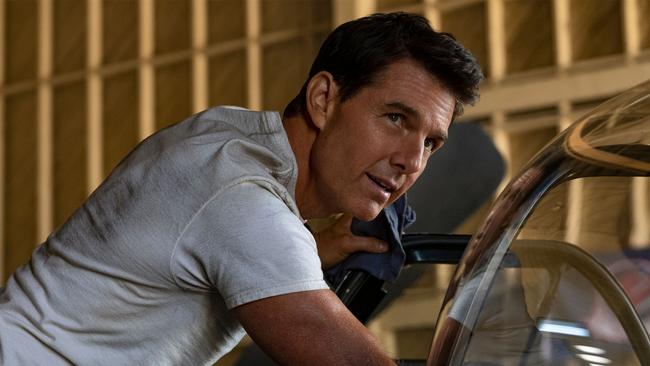
As the follow-up to an era-defining $US176m hit, the sequel had a mammoth legacy to uphold. Full of blockbuster quotes, dripping with sex appeal, and propelled by tactile, visceral stunts that felt real – mainly because they were – Top Gun was one of the defining films of the ’80s.
It was a film fathers took their sons to, and for many of those kids, if it didn’t make them want to be a fighter pilot like Maverick and Iceman, it made them want to work in movies like Tom Cruise, Val Kilmer and director Tony Scott.
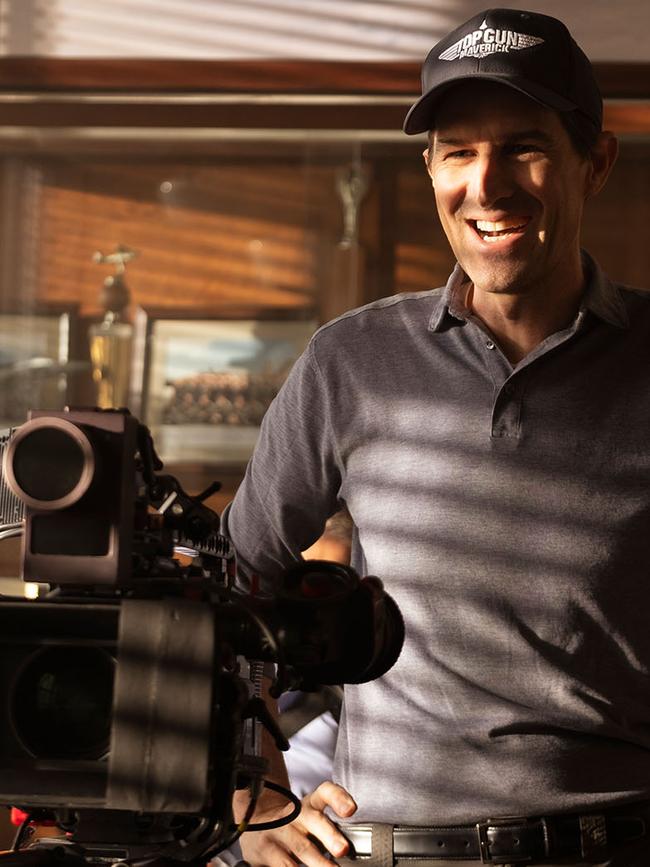
“It’s one of those strong cinematic memories from my childhood,” says Top Gun: Maverick director Joseph Kosinski (Only The Brave, Tron: Legacy). “I was 12 years old and it made a huge impression on me … I hadn’t seen a big blockbuster film that looked like that, you know?”
For Glen Powell, who plays a new hotshot pilot, Hangman, it was a similar story. “I really feel the original is one of the reasons I became an actor,” he says, before adding self-assuredly, “and I think we raised the bar on this movie in every way.”
How do you raise the bar on such a beloved film? For starters, you call on Tom Cruise.
Without Cruise, a Top Gun sequel was impossible, and despite years of attempts from Paramount, producer Jerry Bruckheimer, and even Cruise himself back in the day, the film could never get off the ground – largely because there was never a story Cruise felt was worthy of the original. Kosinski changed all that in Paris.
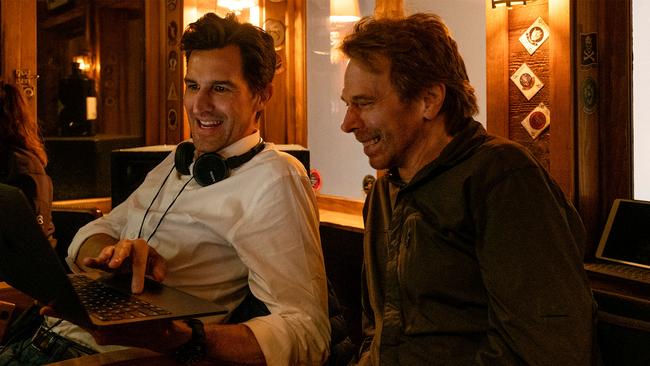
“Joe came up with a story that we all loved,” says Mr Blockbuster himself, Bruckheimer, the man behind some of the most successful films ever – Armageddon, Top Gun, Bad Boys, and Pirates of the Caribbean are just a few. “We flew to Paris where Tom was shooting Mission Impossible. Joe had a poster that he made, he had a lookbook, and Tom, after hearing Joe’s pitch, called Paramount and said ‘I want to make another Top Gun’.”
It’s clear now, after Cruise teared up at the Cannes premiere of Top Gun: Maverick last week following a surprise Palme d’Or award, that this was more than just a movie for the superstar. And for Paramount, getting him over the line after 30 years and finally getting back in the cockpit with one of Hollywood’s legitimate megastars was more than a coup. But securing Cruise was just the beginning. Time to push it to the edge.
The first Top Gun was revered for its realistic stunts and recreation of the world of dogfighting. But, as Bruckheimer says, while it looked like the actors were really in the jets in Top Gun, they weren’t.
“We put our actors up in an F-14 and every one of them threw up, their eyes were rolling in the back of their heads. We couldn’t use one frame,” he says. “The only footage we used, Tom did because he was able to keep his wits about him up there.” This time, Cruise had to be sure that the new recruits could handle the G-forces of an F-18 fighter jet, while still acting, if Top Gun was going to reach his standards of excellence.
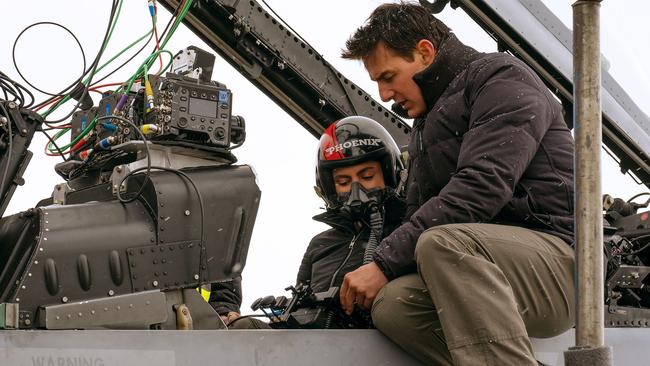
“To move up to the F-18, Tom designed an entire flight program: Cessna, Extra 300, L-39, and then the F-18. But the Cessna is where we started learning the basics of flying,” Powell says, and by “learning the basics” he means “sinking or swimming”.
As fellow newcomer Danny Ramirez (Fanboy) tells it, Powell was given the stick from day one. “As we’re taking off I look over at the Captain taking his hands off the controls. Then I see Glenn pulling up and I’m like ‘I didn’t sign on for Glenn to be the first person that flies me’,” Ramirez says, grinning. “Then he lands the plane, we switch seats, and it was right into the deep end.”
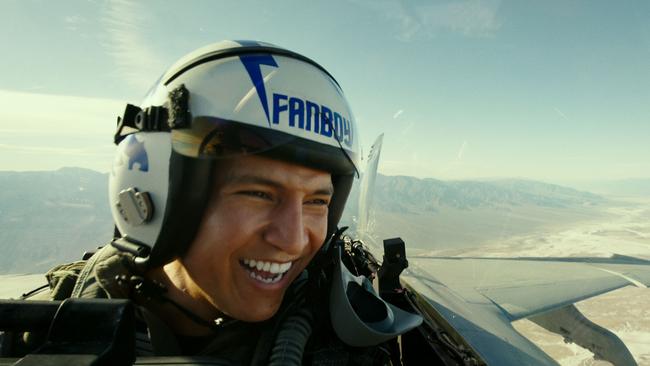
The real fun didn’t start until the new actors started “pulling Gs”. “It was non-stop,” says Greg Tarzan Davis (Coyote) of his experience at the Tom Cruise boot camp. “It was a lot on the body back to back. But, as Danny always says, you go through G withdrawals.” Ramirez adds, “The world’s most intense roller coaster has nothing on this. The experience is unique, one of a kind. There are times every now and then where I’m like ‘Oh, I want some Gs’,” scratching his neck with a laugh.
Cruise didn’t just teach them how to handle the brutal weight of G-forces though. As aspiring filmmakers, the young actors were just as keen to hear from the veteran about movie-making as they were to fly inverted in a fighter jet.
“It was full-blown film school,” says Ramirez.
“Every single day, whether it was setting up your frame, composition, lighting – it was lessons on lessons.” But the most important thing they learned from Cruise, as Ramirez put it, was that “if you want excellence, this is the work you have to put in”.
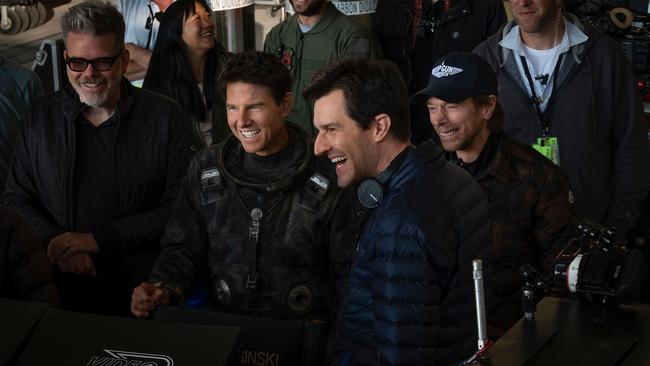
When it comes to blockbusters, who better to learn from? “He’s certainly a better producer than I am,” says Bruckheimer. “He is like fine wine, he gets better with age. He’s worked with great directors, great writers, and great actors in the last 30 years and he’s a sponge. He takes it all in and he learns from everybody.”
Getting the actors ready for the jets was just the beginning though. To create stunts that were capable of wowing a seen-it-all world, Kosinski had to serve as an engineer, choreographer, and general, as much as a director.
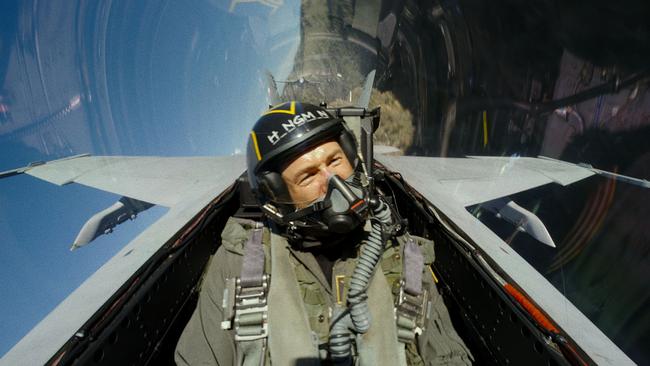
“We worked really closely with the navy so that all the choreography and tactics were as realistic as possible because we knew they had to be flown for real,” says Kosinski. After endless briefings and practice days, the actors would go up, and on those days, their training had to count. “Not only did they have to act,” says Bruckheimer, “they had to know where the sun was, they had to operate the cameras, and we couldn’t see what they were doing until they came on the ground.” At that point, Kosinski and Cruise would check the footage, and if it was no good, the actors and the pilots went straight back. “It’s so hard to concentrate and to deal with the G-forces when you’re in these aircraft, and you just have to tip your hat to these pilots who were able to do it,” Bruckheimer adds.
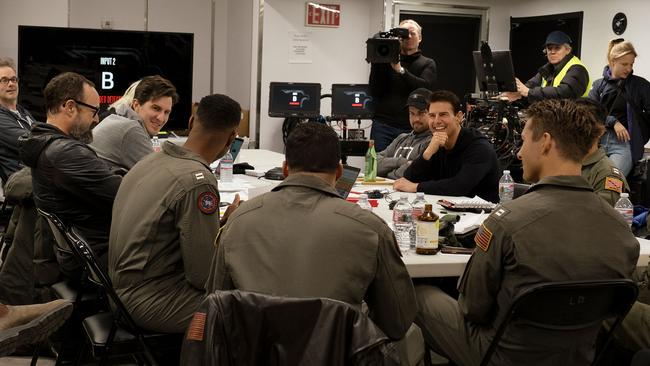
Planning and executing the stunts took 15 months. “It was really a daunting task,” says Bruckheimer, “but you know what? When you see the movie, it’s all worth it. You are experiencing what these actors actually experienced.” The result is breathtaking, but Kosinski also recognised that this isn’t a Go-Pro video. “The most important thing is that you’re driving the story forward and you care about the characters that are going through these sequences.” The same thing that convinced Cruise to come back – the story – has to grab you. For Kosinski, that was clear from the start.
“Having worked with Tom (on 2013’s Oblivion), I knew that it had to be an emotional story to really capture him.” What better way to pack a punch of emotion than to bring Goose’s son Rooster – who you might recall sitting on the piano as Anthony Edward’s beloved Goose plays Great Balls of Fire moments before his untimely death – into the story.
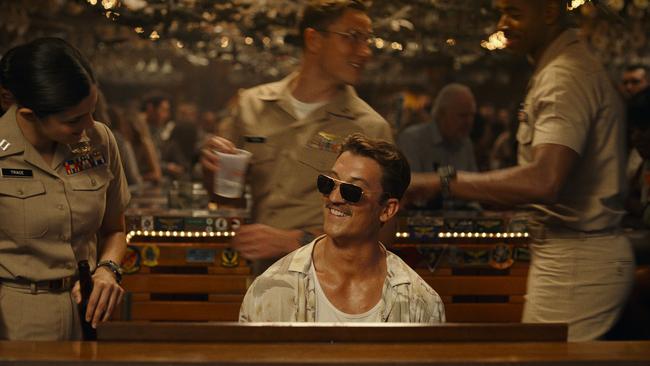
Now a Top Gun pilot himself and part of Maverick’s group of trainees, Rooster, as played by Miles Teller (Whiplash), is disdainful of the veteran’s style of flying. “My dad believed in you,” he says in one scene, “I’m not going to make the same mistake.” For fathers who hid their shining eyes from their sons when Goose hit that canopy in Top Gun, Rooster and Maverick’s journey is sure to hit home.
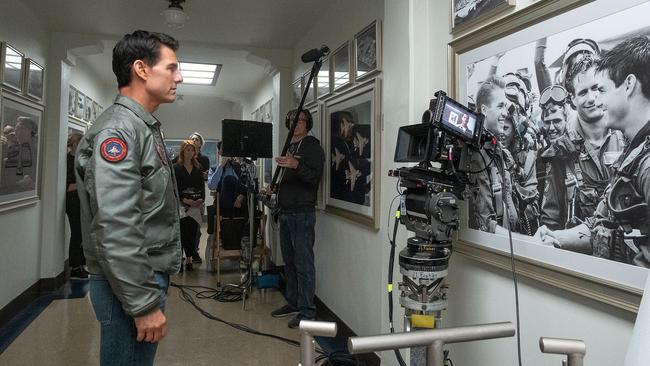
Then there’s Val Kilmer’s emotional return as Iceman. After a much-publicised battle with throat cancer robbed him of the ability to speak and eat – Kosinski and Bruckheimer were able to recreate his voice using AI for the film – his return was doubtful. But, for Cruise, he was a must. “Tom stated early on, ‘We’re not making this picture unless we have Iceman, and Val is in this movie’,” says Bruckheimer. And so he was. We won’t give anything away, but the man who started out as Maverick’s main rival is undoubtedly a beloved friend.
Speaking of rivals, while Rooster and Maverick butt heads, the relationship is more paternalistic than rivalistic. That’s where Powell’s Hangman comes in. The actor who has so far had a very solid career in Hollywood, but has yet to break out, shines as the hotshot pilot with a knack for taking risks and pissing off Rooster, and everybody else, while he does it. If that sounds familiar, it should.
As Powell was told by Top Gun: Maverick co-writer and Cruise’s right-hand man Chris McQuarrie, “The first movie is a coming-of-age movie, this is about a man facing his age. You should represent who Mav used to be, and constantly be testing him on his mortality and where he is in his life.” Powell, who originally went for the role of Rooster and only considered Hangman after Cruise told him to “pick the movies, make the part better” plays that role vibrantly.
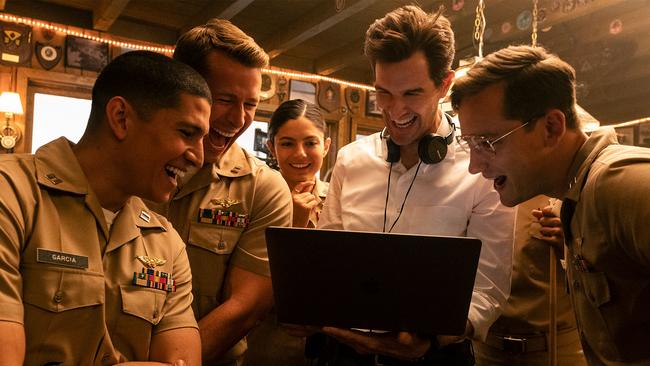
Then, of course, there are the necessary callbacks. It’s a fine line between overt, gimmicky fan service and appropriate homages to the original, and Top Gun: Maverick walks it perfectly. “It’s all about the story,” says Kosinski on managing this tightrope. “The beach sequence, for instance, I knew we had to put one in the movie, people were demanding it. But our screenwriters figured out a way to work the story into that sequence so that you’re telling the story the whole time.”
As Tarzan says of the experience of being in a Fightertown bar just like the iconic original, “We’re making our own movie so though we have the callbacks to these things, the goal was to make our own moments with our own characters. We’re not Slider. We’re not Iceman.”
This same logic goes for the soundtrack. With a three-headed monster of Harold Faltermeyer, returning after his iconic original effort, Hans Zimmer and Lorne Balfe, the music sets its own legacy. But, the most significant moments come from perfectly placed references to the original – of course, we hear Danger Zone – with the only new song that sticks out coming thanks to a Lady Gaga original in the end credits.
The resulting film is one of balance, of pushing right up to the precipice without tipping over. There are moments for diehard fans, but they aren’t overdone. The stunts push the boundaries of what we conceive of as real, but they never go over the limit. The emotion and drama, while unmissable, are never forced or too in-your-face.
It might not win best picture – although after a six-minute standing ovation at Cannes last week, it could be considered – but it doesn’t have to. It’s an action blockbuster – and it might be the greatest, truest version of one for a decade. When you’re sitting in that chair in the theatre, you can feel the thrill of cinema that hooked so many of us as young children.
“It’s the theatre experience,” says Bruckheimer of what he wants audiences to get. “I want them to have that experience I had when I was a kid and had my popcorn in my lap and my Coke by my side and just sitting there getting lost in those characters. Give me two hours where I forget about everything and enjoy a movie. That’s why you’ve got to see this on a big screen, in a theatre, opening weekend. It’s the most fun you can have.”
Top Gun: Maverick premieres Thursday May 26. Strap in.

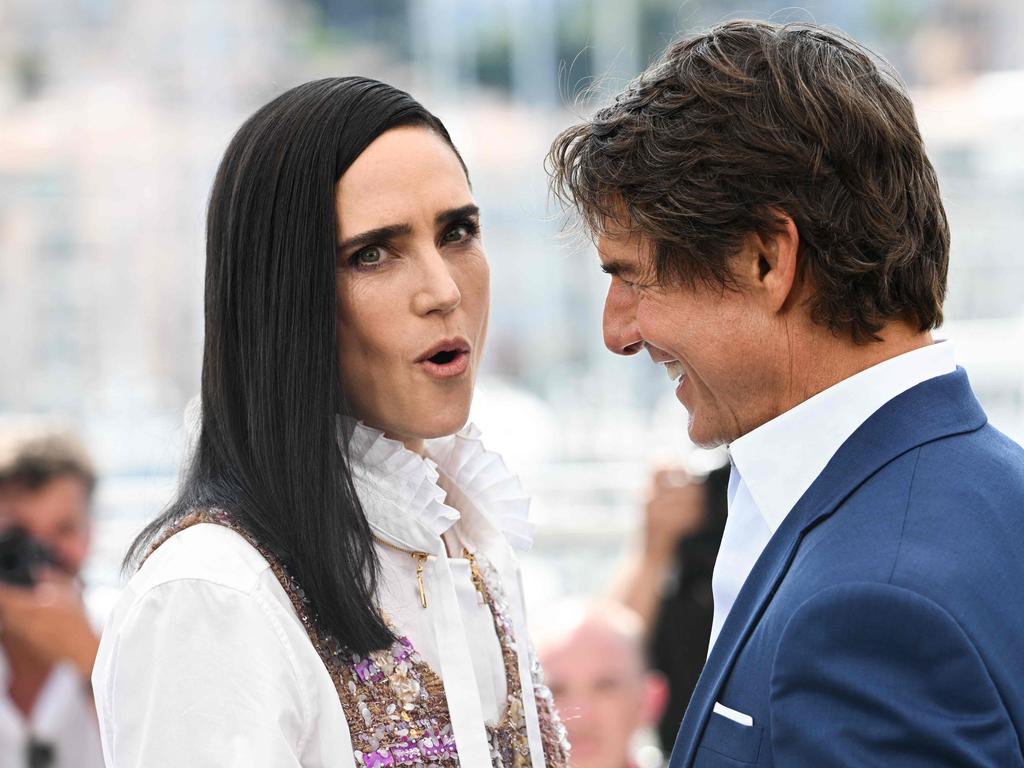
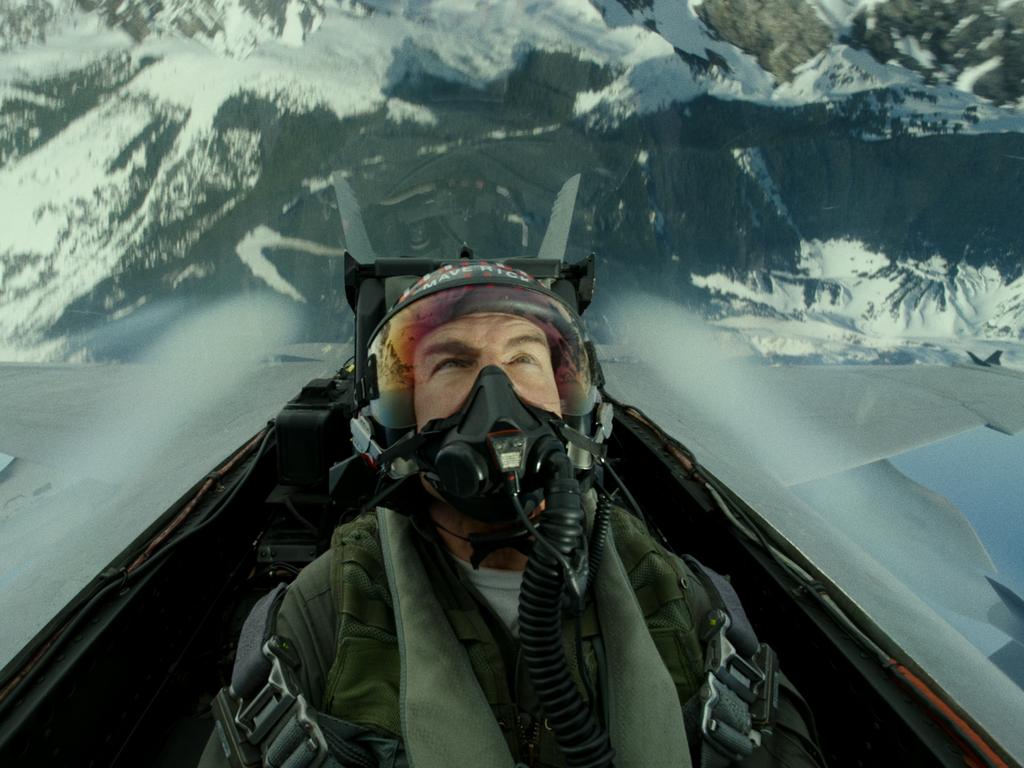
To join the conversation, please log in. Don't have an account? Register
Join the conversation, you are commenting as Logout